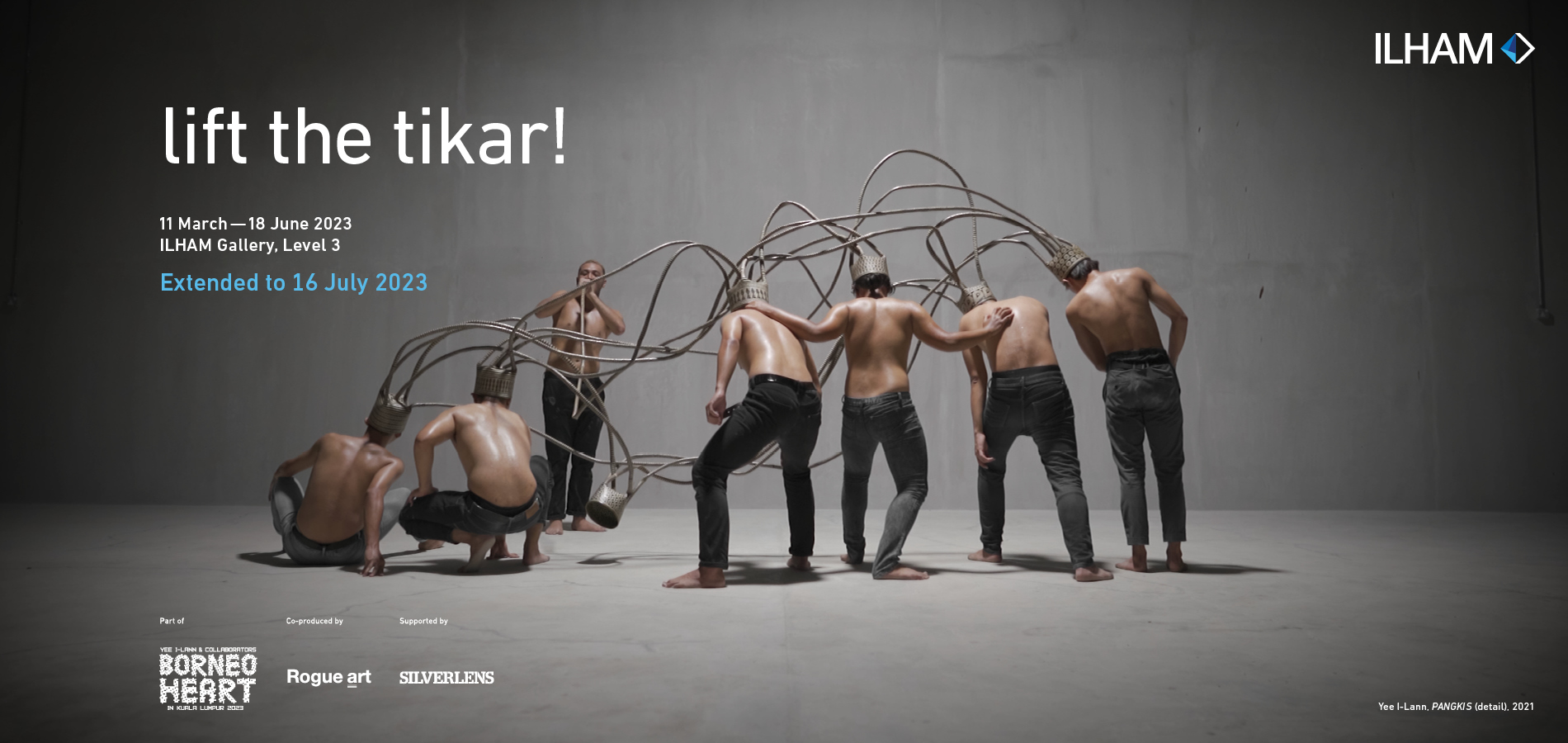lift the tikar!
11 March – 16 July 2023
Level 3, ILHAM Gallery
A boat’s ladder. Ridges at the roof of your mouth. A war cry. A seven-headed hat. A narrow mat, more than 50 metres long, that functions as an index and a bridge.
These are some of the motifs and elements that come together in lift the tikar!, which presents works by Yee I-Lann made in collaboration with Dusun and Murut weavers from Keningau in inland Sabah and Bajau Sama DiLaut weavers on Pulau Omadal in Semporna on the border of the Sulu and Celebes seas, as well as dancers and film-makers based, like herself, in Kota Kinabalu. The collaborations themselves have been a process of weaving – of different visual languages, art histories, stories, philosophies, economies, geographies – to see what could be found together from this process.
This exhibition hopes to draw out ways in which the “tikar” in form and concept can act as a medium for thinking about art, power, language and how we shape society.
It seems a large task for a humble object – a woven mat – one that most of us take for granted. In the home, a tikar might be for sleeping, sitting, making, playing, praying, preparing food, eating. In the community, tikar may be joined together to use for storytelling, meetings, celebrations and ceremonies. For the community on Pulau Omadal, the pandanus tikar, or tepo as it is named in Bajau, is used for drying fish. In Keningau, in Dusun culture, the bamboo pus or galum (Dusun Liwan) or sinabsaab (Dusun Minukok), is used for the rice harvest. For Bajau, as well as Dusun and Murut communities, plain tikar are used for ritual purposes. The artist I-Lann remembers as a child watching Magavau rituals on the mat during Kaamatan.
As she notes, the function of the tikar is life.
There are hundreds of local names for the tikar across the Nusantara archipelago, each linked to a cultural and environmental heritage and landscape. Its use predates and has survived colonisation by Western powers and modern globalisation. It represents inherited ways of living, making and also thinking which are local and specific, shared yet rich in variation.
In the tikar, we can find a representation of an egalitarian, communal politics. Being a domestic object, predominantly made and used by women, we may consider it in a way “feminist”. It is a piece of social architecture that is flat and modular rather than hierarchical, that is flexible, that can afford to be generous.
The exhibition is presented as part of Borneo Heart in Kuala Lumpur (https://borneoheart.yeeilann.com) and co-produced by RogueArt and supported by Silverlens.
Complimentary docent-led tours are available every Thursday (11:00 AM) and Saturday (3:00 PM) for the duration of the exhibition.
2015-2025 © ILHAM GALLERY. ALL RIGHTS RESERVED. WEB DESIGN BY TOMMY NG


